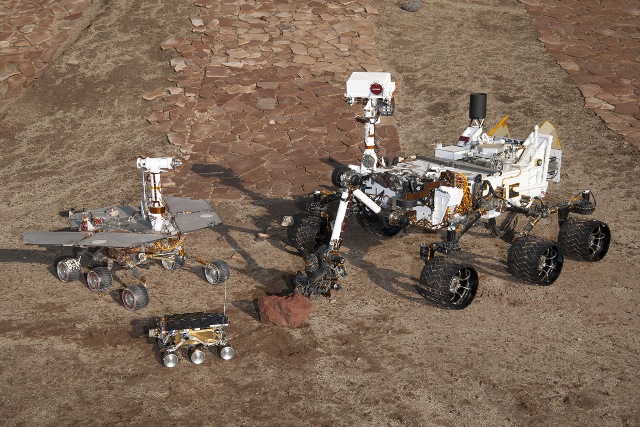We are in an interesting period of space travel; news from the past year has been filled with findings from the Curiosity rover and stories of possible manned missions to Mars. For me the release of Mars Explorer Barbie confirmed ‘Mars Mania’ is upon us. There are big questions surrounding the ethics and feasibility of sending humans to Mars, however proposals keep emerging which hope to do so, many of which are private enterprises.
One interesting example is the Inspiration Mars Foundation, which in 2018 plans to perform a Mars flyby, over a period of 501 days, with a married couple as its crew. Another, Mars One, seems to have really captured the public’s imagination.
It may sound like science fiction, but Mars One hopes to establish a colony on Mars by 2023. The plan is to use existing technologies, such as solar power and water recycling, to create a permanent habitat for the astronauts. Over the next ten years they will send rovers, satellites, living units, life support systems and supply units to Mars ready for the arrival of the first settlers in 2023.

Applications for the first round of astronauts closed recently; over 200,000 people, from more than 140 countries applied. Six teams of four will be selected for training, with further opportunities opening every year. The crew will learn medical procedures, how to grow food on Mars, and how to maintain the habitat and rovers. In 2024 a second crew will depart Earth, with four new settlers arriving every two years until 2033, when 20 people should be living on Mars.
This incredibly challenging mission is estimated to cost $6 billion. Interestingly part of the funding will come from a reality TV show which will follow the teams from their recruitment through to their first few years living on Mars. In addition to high costs the team will face Mars’ fiercely hostile environment; high levels of radiation, low gravity, little atmosphere, high impact from the solar winds, and water sources frozen underground. If successful the astronauts will make history, but it won’t be easy and they will never breathe fresh air again.

The mission throws up many interesting questions from both a personal and technological perspective. Maybe try hosting your own debate on the subject, or if you’re a teacher, you could try raising the issues with your students using one of our discussion formats.
Should we send humans to Mars?
How would you feel if a loved one volunteered for a one-way mission to mars?
Do you think that current technologies could sustain life on Mars?
If you want to build your skills for using discussion in the classroom further, we are running the Talk Science teachers’ course in London on 29th November. For details of how to sign up click here.